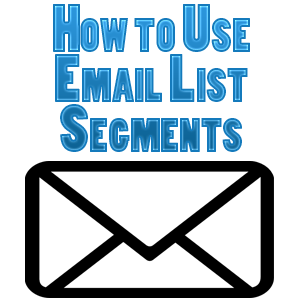Mailchimp offers webmasters the ability to easily create list segments to compartmentalize their subscriber list. Why would we want to compartmentalize our subscriber list? Because this enables us to pick and choose which e-mails get sent to individual subscribers after learning the things which they are interested in in relation to our niche and the kind of e-mails which we have been sending out.
This helps to ensure that your unsubscriber numbers remain as low as possible, and that your conversion rate when you include offers in your emails remains as high as possible.
Mailchimp enables you to use list segments to compartmentalize your subscriber list into different categories. Once you’ve signed into your profile just click on the “subscribers” tab and you can start choosing from dozens of categories to search by. Once you’re finished you can save that segment as you like.
So let’s say that you send out an e-mail to your entire sports based subscriber list about college basketball. Mailchimp reports back to you later on that only about 50% of your total subscriber list opened that e-mail.
From that data, you can create a segment of your total subscriber list to send follow-up college basketball e-mails to. That segment will consist of the 50% who opened that college basketball themed e-mail (as well as newer subscribers who never got that initial email) and you can assume that the rest of your list is not interested in that particular sport and consequently follow up e-mails which also pertain to college basketball.
Note that this is an oversimplified example; you would likely send out at least a couple more e-mails on college basketball to your entire list before you have enough of a point of reference to decide that 50% of your list does not care about college basketball. The point is, once you learn the preferences of that segment of your subscriber list, you can send out very specific e-mails which consist of only those things which interest those individual subscribers.
In getting back to the point about keeping unsubscriptions low and conversions high, emailing a subscriber with information about something which they don’t care about is one thing, but when you start selling and promoting offers for things which certain subscribers of your list have absolutely zero interest in, you run the risk of seeing them unsubscribe from your list.
This is why list segments are good ideas if you work within a broader niche so that you can personalize and tailor each e-mail to each subscriber without wasting a lot of time learning who you should send what to, thus keeping your subscribers happy and you happy.
One final practical use of list segments which I’ll mention is to create a segment for users in relation to when they sign up. So if someone just signed up yesterday, you might not want to email them about your huge new product launch which you have been preselling the rest of your list with constant e-mails about for weeks. Using segments you can exclude new subscribers from getting subsequent e-mails until they have finished your autoresponder series for example.
Sign up for Mailchimp and start building your huge email list for free today.
Note that this is taken from my email marketing guide, so refer to that for more to know on the most effective way to build a relationship with your visitors.
